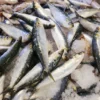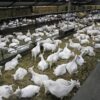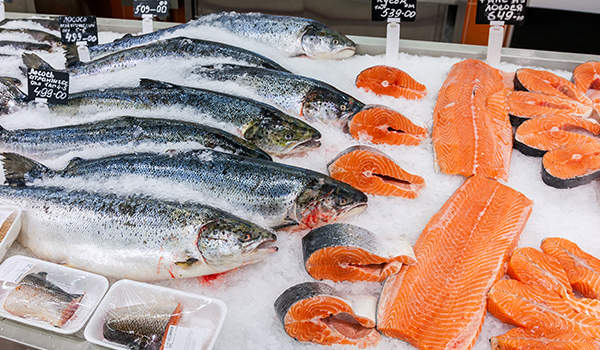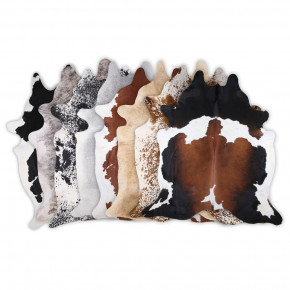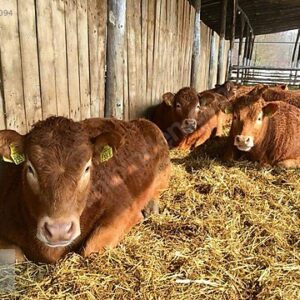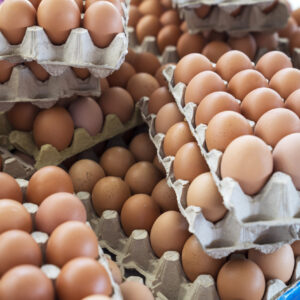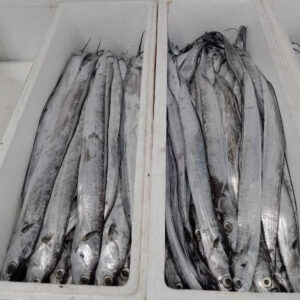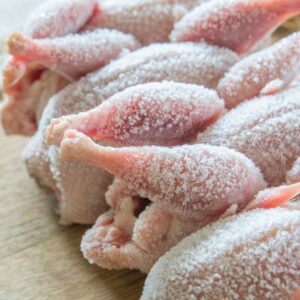Salmon is the common name for several commercially important species of euryhaline ray-finned fish from the family Salmonidae, which are native to tributaries of the North Atlantic (genus Salmo) and North Pacific (genus Oncorhynchus) basin. Other closely related Salmon Fish in the same family include trout, char, grayling, whitefish, lenok and taimen.
Salmon are typically anadromous: they hatch in the gravel beds of shallow fresh water streams, migrate to the ocean as adults and live like sea fish, then return to fresh water to reproduce. However, populations of several species are restricted to fresh water throughout their lives. Folklore has it that the fish return to the exact spot where they hatched to spawn, and tracking studies have shown this to be mostly true. A portion of a returning salmon run may stray and spawn in different freshwater systems; the percent of straying depends on the species of salmon. Homing behavior has been shown to depend on olfactory memory.
Salmon are important food fish and are intensively farmed in many parts of the world, with Norway being the world’s largest producer of farmed salmon, followed by Chile. They are also highly prized game fish for recreational fishing, by both freshwater and saltwater anglers. Many species of salmon have since been introduced and naturalized into non-native environments such as the Great Lakes of North America, Patagonia in South America and South Island of New Zealand.
salmon, originally, the large fish now usually called the Atlantic salmon (Salmo salar), though more recently the name has been applied to similar fishes of the same family (Salmonidae), especially the Pacific salmon, which constitute the genus Oncorhynchus.
The six species of Pacific salmon (Oncorhynchus) are the following: the sockeye or red salmon (O. nerka), which ranges from the northern Bering Sea to Japan and the Columbia River of the American Northwest; the coho or silver salmon (O. kisutch), ranging from the Bering Sea to Japan and the Salinas River of Monterey Bay; the chum or dog salmon (O. keta), ranging from the Mackenzie and Lena rivers in the southern Arctic southward to Japan and the Rogue River; the king, spring, or chinook salmon (O. tshawytscha), from the Yukon River to China and the Sacramento River; the pink or humpback salmon (O. gorbuscha), from the Arctic to Japan and the Klamath River; and the cherry salmon (O. masu), which is found off Japan. The Atlantic salmon is native to the rivers on both sides of the North Atlantic.
Pacific salmon live most of their life in the ocean, but as adults they return to the stream where they hatched in order to spawn. They use their olfactory senses (their sense of smell) to find their spawning grounds in their home river, and at least one species, the sockeye salmon (Oncorhynchus nerka), can also sense differences in Earth’s magnetic field to navigate back to its home stream from the open ocean. The female digs a pit in the stream gravel into which she and a male spawn simultaneously, and she then covers up the eggs with gravel. Adult Pacific salmon die soon after spawning, but many Atlantic salmon return to the sea and after one or two years in open waters may spawn again, some up to three or four times.
Most salmon spawning takes place in late summer or fall, and the eggs usually hatch in late winter. Incubation rates depend on temperature, taking from 60 up to 200 days. After hatching, the salmon fry consume the yolk in the attached sac before wriggling up through the gravel to seek food. Young pink salmon descend almost immediately to the sea, while chum salmon leave in a few weeks. Coho salmon remain an entire year in the streams, while young king and Atlantic salmon may remain feeding in streams for one to three or more years. Young sockeye salmon dwell for one to five years in lakes before migrating seaward.
Salmon are silvery-sided fishes while in the ocean, but during the breeding season a change in coloration occurs that varies from one species to another. The males generally develop hooked jaws. The changes are most striking in male Pacific salmon. Adults run upriver in spring or fall and take no food, although they will strike at fishing lures. The spawning grounds may be close to the sea, but the king and chum salmon swim more than 2,000 miles (3,200 km) up the Yukon River to spawn in its headwaters. The migrating salmon, impelled by instinct, fight rapids and leap high falls until they reach their spawning grounds. Even landlocked salmon, which mature in deep lakes, ascend tributary streams to spawn.
Atlantic salmon, though fished commercially in certain areas, are valued chiefly as sport fish. They are farmed in fish pens in many parts of the world. The king and coho salmon are prized sport fish in the larger rivers of the Pacific coast. The commercial fishery of Pacific salmon nets millions of pounds annually, of which nearly half is pink salmon, one-third is chum salmon, and most of the remainder is sockeye.

